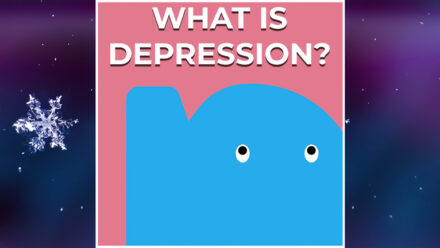
Should a psychiatrist bring up euthanasia when you are not even considering it yourself?
PsychosisNet is linked with the ISPS – the Internal Society for Psychological and Social Approaches to Psychosis – and that organisation recently rang alarm bells regarding the situation in the Netherlands. In an international statement the ISPS clearly states that allowing young people euthanasia when they’re suffering psychologically – which is happening more and more – is a dangerous development.
Psychological suffering is not static or incurable
The statement warns people: psychological suffering is not static or incurable, it is variable, multi-layered, and often the result of trauma, exclusion, or long-term loneliness. The wish to die is usually the result of desperation, and not of an irreversible condition. And it is precisely the practitioner’s job to give people hope, not to give up hope prematurely.
Therefore, at PsychosisNet, we are worried as well
Because we hear more and more worrying stories. Especially about young people, often young women, who feel completely defeated. They sought help, to end their desperation and the feeling that life doesn’t offer an escape. And then the psychiatrist brought up…euthanasia. Whilst the thought had never even crossed the patients’ minds. No desire, no plan – sometimes exactly the opposite: a will to live, but just no idea how.
And then suddenly the suggestion: “We could also discuss euthanasia.”
Bam.
For some people that feels like a ravine opens up. As if it’s confirmed in their hearts that they should not be here. That life is indeed hopeless, that they’re a burden, and there’s no point in treating them. And that even their psychiatrist sees their death as a plausible option. After that, how do they not lose faith in their healthcare provider?
Let’s be clear on something. Euthanasia is not a form of treatment. It was never meant to be a standard option within the treatment options. It is an extreme, morally loaded decision that can only be considered in a careful process – if there is no hope, after years of trying to lighten the burden, and if someone asks about it themselves, repeatedly and consistently.
When the Dutch law on euthanasia was created, young people with a life expectancy of another fifty, or sixty years, who are suffering psychologically, were not considered. Neither were people with a trauma, neurodiversity, or people who got stuck in a care system that rejects them rather than embraces them.
But nevertheless, it happens
We are getting an increasing amount of signals that psychiatrists actively bring up euthanasia with young people, without an actual death wish preceding it. That raises important questions. Because what does it say about our current society, if death is suggested sooner than defining a treatment plan?
Sometimes it seems like a tunnel vision is created – a kind of biologically-determined pessimism about being “done with treatment” – and that tunnel leads to the end. Whilst precisely in psychologically suffering, the meaning of desperation is strongly linked to its context, history, neglect, and lack of support. It’s not an illness in the classic sense – it’s existential suffering, and it requires time, proximity, and somebody to lean on. Not a form to fill in and a last resort.
And let’s be honest
The Dutch healthcare system can be quite chaotic. Year-long waiting lists, healthcare workers who are overworked, and a production system that focuses on ticking off rather than connecting. In that context euthanasia is not a choice, but an accusation.
The ISPS rightfully states that we are crossing a line when we mistake medical-ethical responsibility for individual autonomy. Autonomy goes hand in hand with connection. Someone who is suffering from isolation due to psychological issues, doesn’t have the ‘free choice’ to die – not when society fails at offering a better life.
At PsychosisNet we see that these experiences only push patients further out of the system. It causes people to lose faith in the healthcare system. The psychiatrist is no longer considered an ally, but a potential threat. Some people stop their treatment, others stay silent – afraid to be honest about their desperation, because they don’t want their doctor to bring up euthanasia again.
The dangers of medicalisation and tunnel vision
There are reasons to be careful. We know from some of the stories we’ve heard that:
• Some psychiatrists are insufficiently qualified in recognising trauma-and bonding dynamics that may lie underneath the death wish. For example, with patients who were abused as a child, or patients with PTSD. In situations like that, euthanasia can become a repeat of the destruction, in which the doctor is ‘recruited’ to end the inner battle.
• In neurodiverse people the suffering can unjustly be reduced to medical language, whilst in reality it’s more about social exclusion, loneliness, and lack of suitable support for the patient. This is existential suffering, not an illness.
• The required conditions for euthanasia like legal competence and no chance of recovery aren’t easy to objectively establish – there is no consensus on this amongst psychiatrists.
In short, young, vulnerable people in the Netherlands lack protection, as noticed by the United Nations Committee on the Rights of Persons with Disabilities, in their reports about the Netherlands last year. They are at risk of being dragged into a process of euthanasia they haven’t set in motion. For this reason, euthanasia for psychological reasons has been put on hold for three years in Canada – the people there were worried that this practice was slowly turning into social murder.
Do you recognise our concern? Let us know!
Fortunately, a large majority of psychiatrists in the Netherlands is very cautious when it comes to euthanasia. The psychiatrist Esther van Fenema called for a pause on euthanasia for people under 30 who are suffering psychologically. But there’s also a group of psychiatrists that seems to be radicalising in a biologically-determined tunnel-vision and thinks it’s a good idea to actively push euthanasia.
Should a psychiatrist bring up euthanasia? We want to start a conversation about it
Have you, or anyone you know, experienced that a care provider brought up euthanasia without an explicit desire for it? What did that do to you? And what did you really need?
We need to dare to talk about hope – even if it seems nowhere to be found. We need to recognise that the limitations of life do not necessarily coincide with the limitations of psychiatry. And we need to refuse to reduce young peoples’ lives to a sob story without perspective.
Because, as Cicely Saunders, founder of the hospice movement, said: “When nothing else can be done, there is still a lot to do”.





Comments: